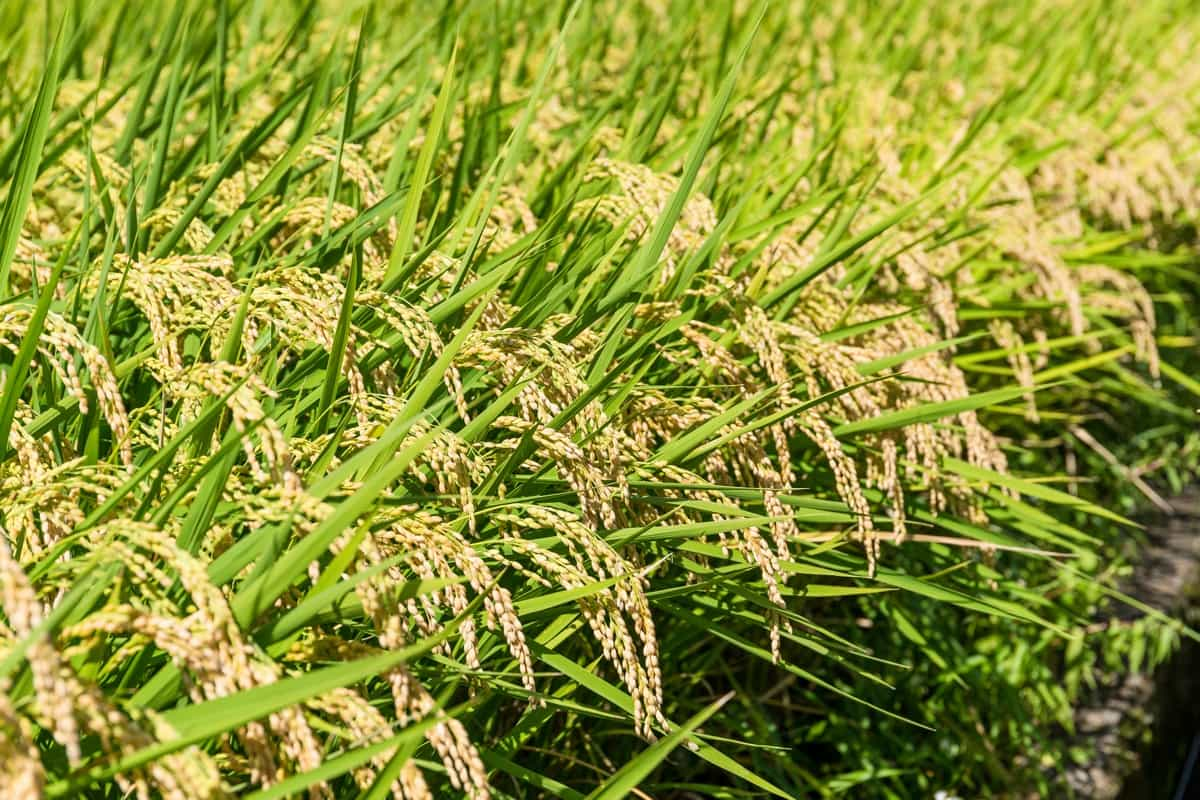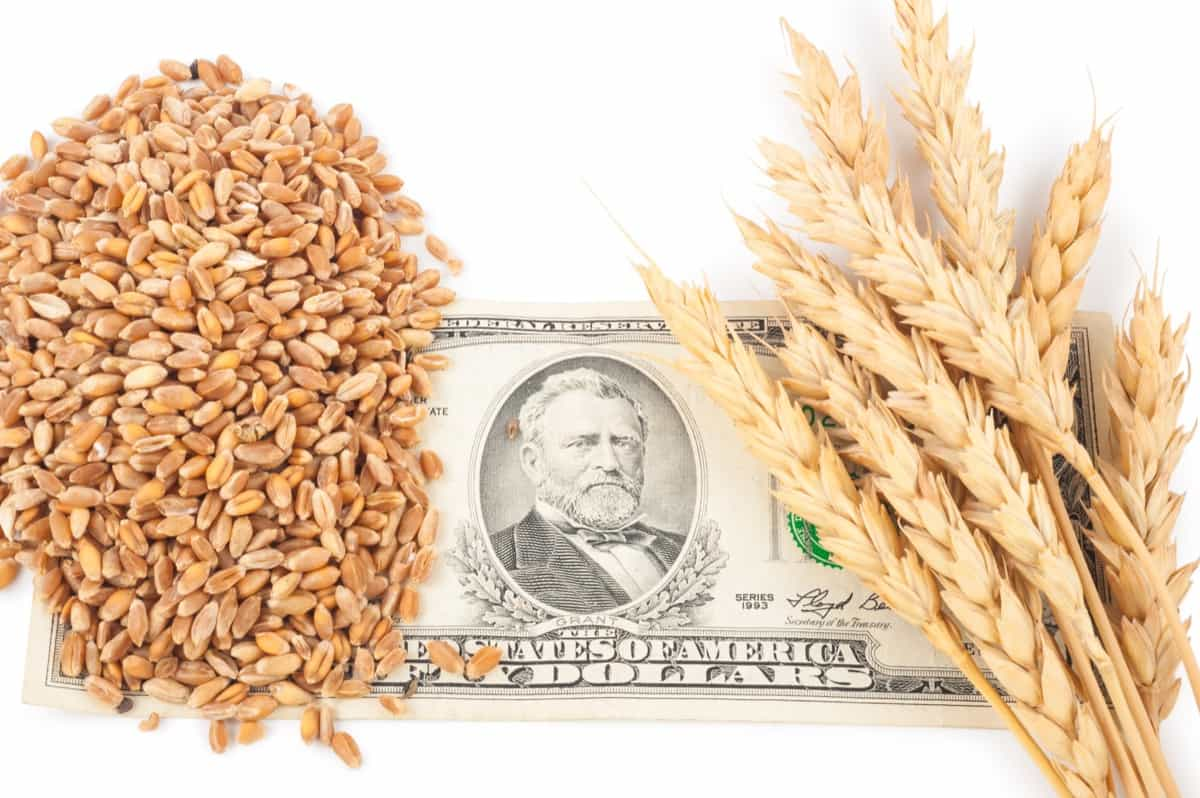In the vast landscape of Indian agriculture, understanding the profitability of crop farming is crucial. To delve into this topic, we’ll explore the intricacies of crop farming profits in India, shedding light on the factors that influence them. This introduction will provide you with an overview of the challenges and opportunities in this sector using simple and easy data.

In today’s era, agriculture stands as one of the fastest-growing and most demanding sectors in India. Some of these ventures can be initiated with minimal capital, making them accessible to many entrepreneurs. The agriculture sector encompasses various facets, including forestry, animal husbandry, and fisheries, and with dedication and commitment, it can yield substantial income.
What is the Agriculture Profit Margin?
Agricultural profit margin measures the profit a farmer earns from selling their crops or livestock. It is calculated by subtracting the total production costs from the total revenue. A higher profit margin indicates more profitable farming activities. Agriculture is one of the most important sectors of the Indian economy, contributing about 17% of the gross domestic product and employing about 60% of the workforce.
However, the profitability of agriculture in India is influenced by various factors, such as climate change, land fragmentation, water scarcity, market fluctuations, input costs, government policies, and infrastructure. These factors affect the productivity, quality, and profitability of agricultural produce and pose challenges for the farmers and the food security of the country.
Understanding the Factors Influencing Agriculture Profit Margin in India
Comparing agriculture profit margin with a shopkeeper’s profit margin, a shopkeeper earns more for every rupee spent, but this does not necessarily mean the farmer is richer. The farmer may have a larger production scale, sell more wheat, and have other income sources, such as subsidies or government loans. For example, if a farmer spends Rs. 10,000 to grow wheat and sells it for Rs. 15,000, their profit margin is Rs. 5,000 or 33%. The higher profit margin, profitable farming activity.
The agriculture profit margin can vary depending on factors such as the type of crop or animal, output quality and quantity, market demand and supply, weather conditions, and input costs. Some crops or animals may have higher profit margins due to their value or lower investment requirements. For example, fruits and vegetables may have higher profit margins than grains or pulses due to higher prices or lower input costs.
Analyzing the Impact of Government Policies on Agriculture Profit Margin in India
The impact of government policies on India’s agriculture profit margin is a complex and dynamic issue that requires real-time and latest information. The OECD reports that government intervention in India can positively and negatively support agriculture, with market and trade interventions often depressing prices and subsidies incentivizing their use.
In case you missed it: Climate-Resilient Crop Varieties: Why You Should Consider Climate-Smart Agriculture

The government has implemented measures such as the National Agriculture Market (e-NAM), raising the Minimum Support Price (MSP) for 2018-19 kharif crops, and delisting fruits and vegetables from the Agricultural Produce Market Committee (APMC) mandis. However, these policies have faced challenges such as negative market price support, inadequate infrastructure, lack of farmer awareness, and political interference. Therefore, the impact of government policies on agriculture profit margin in India is not uniform across regions, crops, and farmers and requires real-time assessment.
Exploring the Role of Technology in Enhancing Agriculture Profit Margin in India
Technology plays a role in improving the productivity and profitability of agriculture in India. Technology can help farmers adopt better farming practices, reduce input costs, increase crop quality and quantity, access market information and opportunities, and cope with climate change and natural disasters. Some examples of technology that can enhance agriculture profit margin in India are precision agriculture, digital platforms, biotechnology, irrigation systems, and renewable energy.
Examining the Relationship Between Crop Yield and Agriculture Profit Margin in India
Crop yield is one of the factors that determine the agriculture profit margin in India. Crop yield refers to the crop produced per unit of land area. Higher crop yield means more income for farmers and lower production costs. Crop yield depends on soil quality, water availability, pest and disease management, crop variety, weather conditions, and farming techniques. Improving crop yield can increase agriculture profit margin in India by boosting food security, reducing poverty, and enhancing rural development.
Influence of Climate Change on Agriculture Profit Margin in India
Climate change is a major challenge for agriculture in India. Climate change can affect the agriculture profit margin in India by altering the temperature, rainfall, humidity, wind, and sunlight patterns that influence crop growth and development. Climate change increases the frequency and intensity of extreme weather events like droughts, floods, heat waves, cyclones, and hailstorms that can damage crops and infrastructure. Climate change can reduce agriculture profit margin in India by lowering crop yield, increasing input costs, disrupting market supply and demand, and threatening food security and livelihoods.
Investigating the Effect of Market Dynamics on Agriculture Profit Margin in India
Market dynamics refer to forces that shape the supply and demand of agricultural products in India. Market dynamics can affect the agriculture profit margin in India by influencing the prices, quality standards, availability, and accessibility of agricultural products. Market dynamics depend on consumer preferences, income levels, population growth, urbanization, globalization, trade policies, competition, and innovation. Market dynamics can improve agriculture profit margin in India by creating new market opportunities, enhancing value addition, promoting diversification, and encouraging entrepreneurship.
In case you missed it: RNR 15048 Paddy Cultivation Process: Low-Gl Rice, Sugar-free Rice, and Diabetic-Friendly Rice

Evaluating the Importance of Efficient Supply Chain Management for Agriculture Profit Margin in India
One of the main factors affecting the agriculture profit margin in India is inefficient supply chain management, which involves high costs, wastage, and intermediation. According to a report by NITI Aayog, about 16-17% of fruits and vegetables and 10% of cereals are lost during post-harvest handling and transportation.
Moreover, the farmers often have to sell their produce to intermediaries at low prices, who then charge high margins from the consumers. To address issue, the government has launched several initiatives, such as e-NAM, PM-KISAN, and FPOs, which aim to provide better market access, direct income support, and collective bargaining power to the farmers.
Uncovering the Challenges Faced by Small-Scale Farmers in Achieving a Sustainable Agriculture Profit Margin in India
The difficulties faced by small-scale farmers, who make up about 86% of all farmers in India, influence the agriculture profit margin in that country. These challenges include a need for access to credit, inputs, technology, extension services, and insurance. These factors limit the productivity and profitability of the farmers, who often face risks such as crop failure, price volatility, and indebtedness.
To overcome these challenges, the government has implemented various schemes such as Kisan Credit Card, Pradhan Mantri Fasal Bima Yojana, Soil Health Card, and Pradhan Mantri Krishi Sinchai Yojana, which aim to provide affordable credit, crop insurance, soil testing, and irrigation facilities to the farmers.
Understanding the Role of Agricultural Subsidies and Incentives in Boosting Profit Margin in India
The agriculture profit margin in India is the role of agricultural subsidies and incentives, which are meant to support the farmers’ income and ensure food security. However, these subsidies and incentives must be more efficient, equitable, and distortionary. For instance, the minimum support price (MSP) system covers only a few crops and benefits mainly the large farmers in a few states.
Similarly, the fertilizer subsidy is skewed towards urea, which leads to overuse and environmental degradation. Moreover, these subsidies and incentives impose a huge fiscal burden on the government and distort the market signals. To reform this system, the government has proposed to replace the input subsidies with direct benefit transfer (DBT) to the farmers’ bank accounts.
In case you missed it: Impact of Blockchain Technology and ChatGPT on Agriculture

Analyzing the Impact of Global Trade on Agriculture Profit Margin in India
India net exporter of agricultural products with a trade surplus of $14.6 billion in 2019-20. However, the global trade scenario is often uncertain and volatile due to trade barriers, tariff wars, sanitary and phytosanitary measures, and non-tariff barriers. These factors affect the competitiveness and profitability of Indian agricultural exports in the international market. To cope with this situation, the government has taken steps such as signing free trade agreements (FTAs), diversifying export markets and products, enhancing quality standards and certification systems, and providing export incentives to the farmers.
Exploring Sustainable Farming Practices to Improve Agriculture Profit Margin in India
Sustainable farming practices aim to preserve the environment, enhance soil fertility, and increase crop productivity. In India, sustainable farming practices include crop rotation, organic farming, agroforestry, conservation tillage, and drip irrigation. Crop rotation prevents soil depletion and pest infestation, improving soil structure, nutrient availability, and water retention.
Organic farming uses natural inputs like compost, manure, biofertilizers, and biopesticides, reducing soil erosion, water pollution, and greenhouse gas emissions. Agroforestry integrates trees and shrubs with crops and livestock, providing benefits like shade, windbreak, fodder, fuelwood, income diversification, biodiversity, carbon sequestration, and soil conservation.
Conservation tillage minimizes soil disturbance, reduces labor, fuel, and machinery costs, and prevents soil compaction, runoff, and erosion. Drip irrigation delivers water at plant roots, saving water, energy, and fertilizer improving crop yield and quality. By implementing these sustainable farming practices, farmers can enhance their agriculture profit margin while protecting the environment and ensuring food security.
Investigating the Role of Agricultural Research and Development in Enhancing Profitability in India
Agricultural research and development (R&D) is essential for improving the productivity, quality, and sustainability of agricultural production systems in India. R&D can help farmers adopt new technologies, practices, and innovations that can reduce costs, increase yields, enhance resilience, and add value to their products. R&D can also address the challenges of climate change, pests, diseases, water scarcity, and market fluctuations. By investing in R&D, India can enhance its agricultural competitiveness, food security, and rural livelihoods.
Assessing the Potential of Organic Farming for Higher Profit Margins in Indian Agriculture
Organic farming is agriculture that relies on natural inputs and processes to maintain soil health, crop diversity, and ecological balance. Organic farming can offer higher profit margins for Indian farmers by reducing their dependence on expensive chemical fertilizers, pesticides, and seeds and increasing their access to premium markets that demand organic products. Organic farming can also improve the environmental quality, biodiversity, and human health of the farming communities.
In case you missed it: Cooperative Societies in the Agricultural Sector in India: Benefits, Role, and Challenges

Examining Strategies for Diversification and Value Addition to Increase Agriculture Profit Margin in India
Diversification and value addition are two strategies that can help Indian farmers increase their income and reduce their risks from agricultural production. Diversification involves growing crops or livestock or engaging in non-farm activities to reduce exposure to price volatility, weather shocks, and crop failures. Value addition involves processing, packaging, branding, or marketing agricultural products to increase their value and appeal to consumers. Both strategies can help farmers capture more of the value chain and enhance profitability.
Diversifying Agribusiness Opportunities and Profit in India
The dairy business, mushroom farming, organic manure production, fertilizer distribution, dried flower business, tree farming, hydroponic retail store, organic greenhouse, tea leaf plantations, beekeeping, export of fruits and vegetables, medicinal herb cultivation, maize farming, spices processing, goat rearing, potato powder business, vegetable cultivation, soybean cultivation, certified seed dealer, and agriculture consulting are all potential business opportunities.
Dairy farming, which requires substantial initial investment, offers high returns. Mushroom farming capitalizes on the growing demand for these fungi in restaurants, homes, and hotels. Organic fertilizers and vermicompost are eco-friendly options. Fertilizer distribution in rural areas offers excellent prospects for sourcing and supplying agricultural inputs. Dried flowers can be cultivated on vacant land, targeting craft stores and flower enthusiasts.
Tree farming offers high returns in the long term, appealing to those with patience and a focus on sustainable practices. Hydroponic retail stores offer a one-stop shop for hydroponic equipment. Organic greenhouses are thriving as demand for organic produce grows, with investors buying land for greenhouse construction. Tea leaf plantations can yield substantial profits, but selecting the right climate and location is critical. Beekeeping offers an increasingly profitable venture, provided proper training is provided.
Cropwise Agriculture Profit Margin in India
The government of India has been consistently raising the minimum support price (MSP) for all 22 Kharif, Rabi, and other commercial crops since the agricultural year 2018-19. The MSP, set at a minimum of 50 percent above the all-India weighted average cost of production, serves as both an incentive and a safety net for farmers.
In case you missed it: How Digital Agriculture/Farming Helps Rural Farmers – A Guide for Smart Farming

The table below provides data for select crops, showcasing their cost of cultivation, MSP, and profit margin in India for 2022-23, based on information from the National Conference on Agriculture and Agricultural Statistics at a Glance 2021. The profit margin is calculated using the formula (MSP – Cost of Cultivation) / Cost of Cultivation * 100. All figures are in Indian rupees per quintal, with the profit margin presented as a percentage.
| Crop Name | Cost of Cultivation | MSP | Profit Margin |
| Paddy | 1,205 | 1,940 | 61.0 |
| Wheat | 960 | 2,015 | 109.9 |
| Maize | 1,130 | 1,850 | 63.7 |
| Cotton | 3,453 | 5,825 | 68.7 |
| Sugarcane | 155 | 290 | 87.1 |
| Onion | 6,000 | 8,000 | 33.3 |
Conclusion
India’s agricultural sector boasts promising profit margins for farmers, with government-backed initiatives like the minimum support price (MSP) ensuring financial security. Despite its profitability, challenges such as weather fluctuations and pests remain key considerations in crop farming.
- Types of Pesticides Used in Agriculture: A Beginner’s Guide
- Economical Aquaculture: A Guide to Low-Budget Fish Farming
- 15 Common Planting Errors That Can Doom Your Fruit Trees
- How to Make Houseplants Bushy: Effective Tips and Ideas
- Innovative Strategies for Boosting Coconut Pollination and Yield
- Pollination Strategies for Maximum Pumpkin Yield
- The Complete Guide to Chicken Fattening: Strategies for Maximum Growth
- Natural Solutions for Tulip Problems: 100% Effective Remedies for Leaf and Bulb-Related Issues
- Revolutionizing Citrus Preservation: Towards a Healthier, Greener Future
- Natural Solutions for Peony Leaf and Flower Problems: 100% Effective Remedies
- Maximizing Profits with Avocado Contract Farming in India: A Comprehensive Guide
- Natural Solutions for Hydrangea Problems: 100% Effective Remedies for Leaf and Flowers
- The Ultimate Guide to Choosing the Perfect Foliage Friend: Bringing Life Indoors
- From Sunlight to Sustainability: 15 Ways to Use Solar Technology in Agriculture
- The Ultimate Guide to Dong Tao Chicken: Exploring from History to Raising
- The Eco-Friendly Makeover: How to Convert Your Unused Swimming Pool into a Fish Pond
- Mastering the Art of Delaware Chicken Farming: Essentials for Healthy Backyard Flocks
- 20 Best Homemade Fertilizers for Money Plant: DIY Recipes and Application Methods
- How to Craft a Comprehensive Free-Range Chicken Farming Business Plan
- Brighten Your Flock: Raising Easter Egger Chickens for Beauty and Bounty
- How to Optimize Your Poultry Egg Farm Business Plan with These Strategies
- Subsidy for Spirulina Cultivation: How Indian Government Schemes Encouraging Spirulina Farmers
- Ultimate Guide to Raising Dominique Chickens: Breeding, Feeding, Egg-Production, and Care
- Mastering the Art of Raising Jersey Giant Chickens: Care, Feeding, and More
- Ultimate Guide to Raising Legbar Chickens: Breeding, Farming Practices, Diet, Egg-Production
- How to Raise Welsummer Chickens: A Comprehensive Guide for Beginners
- How to Protect Indoor Plants in Winter: A Comprehensive Guide
- Ultimate Guide to Grow Bag Gardening: Tips, Tricks, and Planting Ideas for Urban Gardeners
- Guide to Lotus Cultivation: How to Propagate, Plant, Grow, Care, Cost, and Profit
- Agriculture Drone Subsidy Scheme: Government Kisan Subsidy, License, and How to Apply Online
- Ultimate Guide to Raising Araucana Chickens: Breed Profile, Farming Economics, Diet, and Care
- Bringing Hydroponics to Classroom: Importance, Benefits of Learning for School Students
- Ultimate Guide to Raising Polish Chickens: Breed Profile, Farming Economics, Diet, and Care
- Ultimate Guide to Raising Australorp Chickens: Profile, Farming Economics, Egg Production, Diet, and Care
- Silkie Chicken Farming: Raising Practices, Varieties, Egg Production, Diet, and Care
- Sussex Chicken Farming: Raising Practices, Varieties, Egg Production, Diet and Care